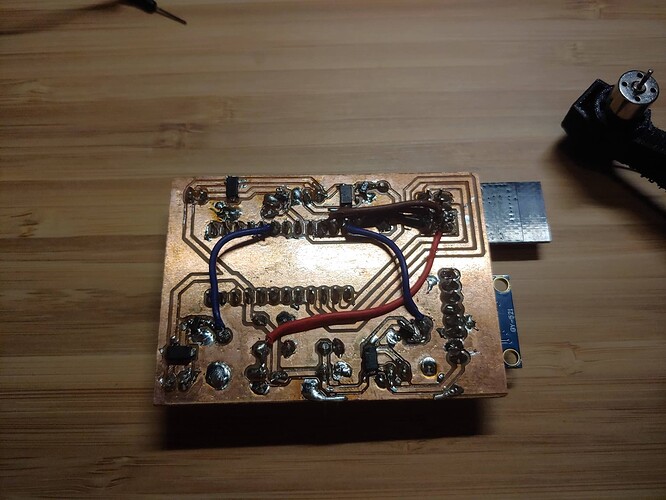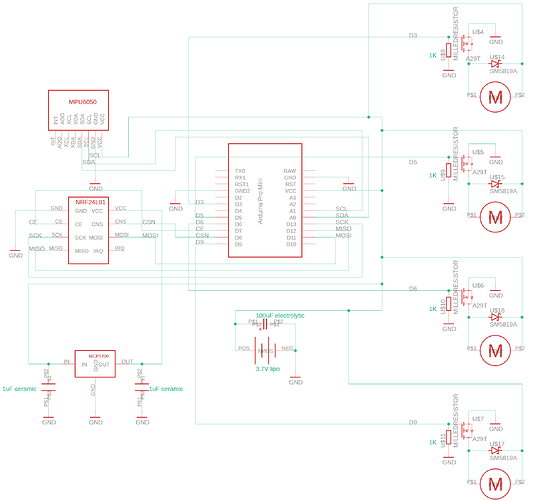I'm trying to build a quadcopter with 3.7v coreless motors and an Arduino Pro Mini as the controller.
When a motor is plugged in to the output controlled by pin 9 (all details below), it spins up as expected. When any other motor is connected to any other pin, the board makes a clicking noise, and what I presume to be the LED connected to SCK flashes, and the board resets.
Power is being delivered to all the output plugs as intended, checked with a multimeter. Additionally, if I plug in the motor on the other pins after the transistor is turned on (ie. reached the loop() section of the code), it sometimes briefly spins before resetting again.
It'll be great if anyone could help identify where the ticking noise comes from mechanically, and what my mistakes are to get here. Thanks!
video of clicking noise (motor plugged into output controlled by D3 in this case):
schematic is below, milled onto a single sided PCB with some hand wiring.
PCB layout below, red is milled traces and yellow/beige are hand wired (some connections look unconnected on the diagram, but there's a copper pour ground among the entire board) - note I labelled the footprint of the A29T mosfets wrong and had to flip them upside down to mount on the board, but they still all work.
testing it with this code, have also tried digitalWrite(pin, HIGH):
void setup() {
pinMode(5, OUTPUT);
pinMode(6, OUTPUT);
pinMode(3, OUTPUT);
pinMode(9, OUTPUT);
delay(10000);
}
void loop() {
analogWrite(3, 200);
analogWrite(5, 200);
analogWrite(6, 200);
analogWrite(9, 200);
}




